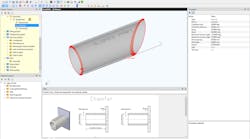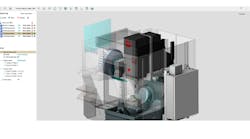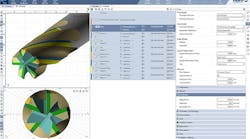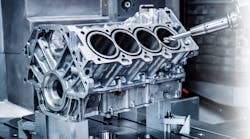By David Segal
Every manufacturer aims to satisfy its customers and stakeholders, addressing their needs and prioritizing their concerns. Part of this constituted effort involves decreasing costs, material wastage and personnel hours required to bring a product from concept to distribution. Machinists in particular are expected to optimize their product design and development processes to provide the maximum return on investment; not only does idled equipment carry significant cost to the end-user, but poor design could wreak havoc for factory employees.
This is why lean product development has been a challenge for some time. There are so many processes and activities that comprise the full product value stream — from design to prototyping to systems engineering and packaging — that refining all of these individual elements one by one is nearly impossible, and the results wouldn’t be worth the effort. Furthermore, since value streams involve collections of processes, contributors and partners, evaluating to determine the point that each process benefits the customer is complicated, especially for activities and process handoffs that stretch around the globe. It’s difficult to quickly identify waste across a value stream that extends across continents.
Machinists and other industrial equipment manufacturers invest more in physical assets than other businesses not only in the purchase of highly expensive plants, machinery and tools, but also in the maintenance and management of these assets. Optimum machine performance is crucial for end-users, and in this economic climate they need maximum value and a long life from every single purchase. This means offering more value, more customer service (line integration, onsite engineering support, etc.) for a lower price. When neither the manufacturer nor the end-user has the luxury of money or time, going lean is a big deal.
With all of this understanding, how do we do it?
The only way to map modern value streams is to harness and distribute process information to the right people at the right time and in the right format. Product Lifecycle Management (PLM), which by definition incorporates CAD, manufacturing, simulation and business process management, is ideal for helping machinists to effectively deconstruct value stream processes for lean product development. By integrating, federating and presenting actionable information from the aforementioned sources, as well as from a variety of related business processes (e.g. ERP, purchasing and CRM), PLM enables workflow visibility and tracking. PLM is an important tool for harnessing the full scope of enterprise knowledge to optimize value streams, cut costs, improve productivity and give end-users the value they expect.
Fortunately, forward-thinking machinists can satisfy increased customer demands (and improve their own bottom lines) by strategically weaving value stream processes with customer and business needs, optimizing the end-to-end value streams that run across the enterprise. Value stream management can rejuvenate innovation and encourage continuous improvement, but it requires that companies adopt a business transformation strategy, which means that they will be ready to abandon the old and embrace the new.
Maintaining an effective data management and information-sharing infrastructure is vital to managing the value stream. System-wide process management – though not easy given challenges emerging in the product development phase and continuing throughout the product lifecycle – can still work. It is achieved best by using easily accessible 3D visualization and collaboration tools that gather relevant information available within a PLM implementation. PLM is therefore already the best complement to lean product development – pulling together gigabytes of information and allowing employees to organize and analyze data, using a 3D platform, in order to solve problems.
Industrial equipment and machinery manufacturers can’t sustain competitive advantage without continuous improvements that enable larger gains in productivity and profit. Alas, even those with lean product development experience often become impatient with such long-term strategies because they don’t offer the instant gratification. Rather than wowing management with huge cost savings and productivity spikes in specific lines or departments, value stream improvement approaches focus on establishing a tiered framework to identify objectives internally and externally with supply chain partners — and then on embedding problem-solving functionality throughout the value stream.
This approach encourages sustainability and dominant market share in the long run, and yet few machinists have seen the light. According to a 2009 MPI Manufacturing Study, 83 percent of manufacturers operating within a machinery supply chain use lean principles, but only 38 percent of these companies practice strategy deployment at a plant level.
Regardless, it’s our responsibility to keep striving for better practices. Continuous improvement across a value stream relies on basic principles that have always been “lean”: minimizing waste, lowering costs, improving productivity, enhancing revenue generation through better use of assets and improving ROI. Adding PLM to that equation establishes a formula for truly lean and innovative product development.
David Segal is the director of Industrial Equipment (IE) Market Development for Dassault Systès, a developer of 3D and Product Lifecycle Management (PLM) software and services for businesses worldwide.





